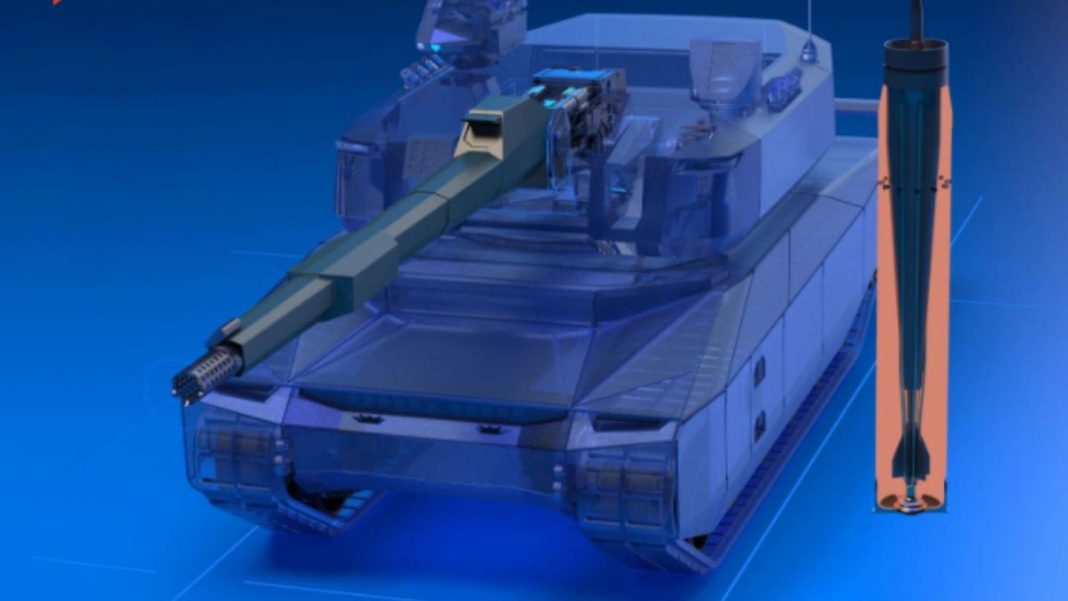Rearmament
Leopard 3-the Franco-German gun battle in the new main battle tank

Nexter presented the more modern cannon.
© Nexter / PR
Who builds the main weapon and tower of the next European main battle tank? Rheinmetall and Nexter pursue very different goals – whoever prevails dominates the joint project.
International arms cooperation should reduce costs and cooperation should strengthen friendship between allies. In fact, there is always a battle between the” partners ” for the most attractive modules of the project. This is what happens with the sixth-generation European fighter jet, the Future Combat Air System, or FCAS for short. Here, the partners suspect that Paris wants to secure complete control over development and that countries such as Germany are particularly welcome as contributors.
And the Leopard successor Main Ground Combat System-MGCS – is also struggling. The latest dispute revolves around tower and main weapon. Since the complete electronics are connected to the turret and cannon, it is technically the fillet piece of the tank. Propulsion, armor and hull largely do without electronics.
T – 14 Armata-How the soldiers sit in Putin’s super tank
8
Display images
Rheinmetall unveiled its prototype in July 2020. The turret was equipped with the previously shown 130 mm / L51 cannon. Unlike the Leopard 2, the tower is equipped with an automatic loader. Only in this way can the exposed tower and explosive armament be separated from the crew. A car loader is also a basic requirement for drone or robot operation.
Evolution or revolution
But the French partner Nexter made it clear that he will not leave the field to Rheinmetall without a fight. Nexter presented a formidable cannon in 140 mm caliber and mounted it on a Lerclerc tank. The French concept is called ” Ascalon ” [Autoloaded and SCALable OutperformingguN] and is far more ambitious than the German model. Apart from the loader, the Rheinmetall cannon follows the well-known Leopard 2 series and is only one size larger than the Rh-120 L44 120 mm cannon. Ascalon, on the other hand, is a weapon of the next generation.
The French use telescopic ammunition to limit the length of ammunition in the tank and still allow a long missile. This means that the propellant charge does not sit behind the projectile, it packs the projectile all around. The mass of the ammunition remains the same, but it can be built much more compact. Russia is also working on a 150 mm gun for the T-14 Armata. The extension to 140 mm from Nexter makes it more possible to use smart ammunition. Guided missiles that can search for their target themselves and change their course. Because they do not have to follow the ballistic trajectory, increasing ranges make sense, in addition, the tank can remain in a hidden position when firing. Ascalon manages the feat of greatly increasing the kinetic energy of the projectile through the telescopic ammunition, without increasing the burdensome internal pressure of the tube. In addition, a reduced recoil should make it possible to mount the weapon even on tanks weighing less than 50 tons. Thus, the problem of the excess weight of Western main battle tanks can be eliminated.
Hardly before 2040 with the troupe
A first demonstrator is to be presented between 2025 and 2028, and the first production models are to be delivered from 2035. At least if there are no delays, which must always be expected in European arms projects. The “Leopard 3” would then come to the force about 20 years later than the Russian T-14 Armata. The Armata is only delivered in very small quantities. The Russian armed Forces – like the West – will rely mainly on modernized battle tanks from the Cold War. Nevertheless, Russian tank construction will have 20 years to further develop the T-14 before the first Leopard 3 is delivered.
Read also:
Swiss officer warns: Putin’s T-14 Armata super tank far superior to all Western models
Video shows Rheinmetall’s new three-ton gun in action




